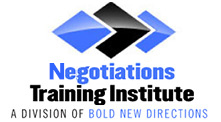Now that you’ve considered your Wish and your Aspiration for your negotiations, you are ready to consider your Bottom Line. What is a Bottom Line and how should you apply it to your negotiation? Remember that we have already discussed that an effective negotiation range is made up of 5 parts; part 3 is the identification of the Bottom Line.
Understanding the Bottom Line
What is the Bottom Line? It is known as the total value of the negotiation; in other words it involves all elements under negotiation. While it might involve a price, it could also involve elements such as warranties, service provision or timelines. Your bottom line is your absolute, final offer on each issue under negotiation. It’s the point at which you need to stop the negotiation and leave. We recommend that you establish your bottom line prior to beginning to negotiate so that you resist agreeing to a deal that doesn’t work for you.
The Power of the Bottom Line
The Bottom Line in negotiations is the least you will accept as a seller or the most you will pay as a buyer. Many professionals report that they have gone past their bottom line, mainly by not having established it fully in advance. This can lead to feelings of regret or even buyers remorse. So to avoid feeling dissatisfied with the outcomes, do your prep work fully to know what your limits are prior to any negotiation. And if you have a limit, make sure it is your limit.
Downsides of a Bottom Line
Are there any downsides to establishing a bottom line? Some say that having a bottom line might be too black and white, discouraging creativity as new data comes to the table. So it’s helpful to keep your creativity flowing as the negotiation unfolds. Bottom lines can also become rigid so it’s important to get a reality check from a colleague to avoid setting your walk away point too high. In addition, we may find that our bottom lines are unduly influenced by emotion. Remember the example of selling the family cottage? When we are selling emotionally laden items like homes, cottages or our services it’s easy to overestimate their value – leading to the creation of an unrealistic bottom line.
How to Learn More
Want to learn more about negotiation skills and the key elements of range? Stay tuned for parts 4 and 5 of this series on creating range in your next negotiation. All five of these elements work together in successful negotiations.
